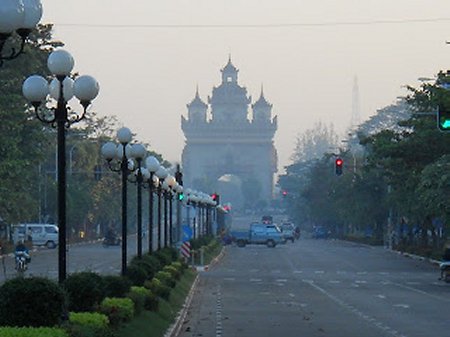Economists Project Strong Eonomic Growth In Laos
Economic growth in 2012-13 should reach 8.3 percent if government and foreign investment projects are implemented as planned, according to the National Economic Research Institute (NERI).
The figure was reported yesterday at the ‘Lao Economy in 2012 and Outlook for 2013′ meeting, organised by the institute with support from the World Bank. The economy should continue to grow by 8.2 percent in 2013-14 and 14-2015, according to the NERI.
The objective of the meeting was to disseminate the results of research on Lao macroeconomic conditions in 2012 and 2013, which was undertaken by NERI under the Ministry of Planning and Investment in collaboration with other concerned departments. According to the macroeconomic report, the world economy grew slowly in 2012, creating negative conditions for Lao economic growth. Nevertheless, gross domestic product (GDP) continued to expand at 8.29 percent, as set by the plan the previous year.
GDP per capita reached 10.8 million kip (about US$1,349). The agricultural sector grew by 2.8 percent, accounting for 26.7 percent of GDP; the industrial sector grew by 14.4 percent, accounting for 29.6 percent of GDP; and the service sector grew by 8.1 percent, making up 37.8 percent of GDP.
 |
|---|
|
Deputy Minister of Planning and Investment, Dr Bounthavy Sisouphanthong ( right ), and NERI Director General, Dr Leeber Leebouapao (left), at the annual economic meeting. |
Macroeconomic stability resulted in inflation dropping from 7.58 percent in 2011 to 4.26 percent in 2012, and the value of the Lao kip grew by 0.2 percent on the US dollar and 1.98 percent on the Thai baht.
According to the report, growth in the world economy is expected to increase from 3.28 percent in 2012 to 3.62 percent in 2013, with many Lao trading partners reflecting that lift.
Growth in the European Union is projected to increase from -0.21 percent in 2012 to 0.49 percent in 2013. Meanwhile ASEAN countries like Singapore, the Philippines, Malaysia, Indonesia and Thailand will lift their growth rates from 5.42 percent to 5.75 percent, while America’s growth will fall from 2.17 percent to 2.12 percent.
Vietnam’s economic growth is expected to increase from 5.11 percent to 5.88 percent, Thailand’s from 5.75 percent to 5.99 percent, Myanmar’s from 6.2 percent to 6.3 percent and China’s will jump from 7.83 percent to 8.23 percent.
The boost in partners’ growth is expected to positively impact on economic growth within Laos.According to NERI’s initial estimates, Lao economic growth in 2012-13 will reach 8.1 percent, with the agricultural sector to grow by 3.1 percent, the industrial sector by 10.9 percent and the service sector by 9.8 percent. However, if government and foreign investment projects are successfully implemented, the overall figure will reach 8.3 percent and continue to grow by 8.2 percent in 2013-14 and 2014-15.
If that happens, the country will reach the targets set in the 7th Five-Year National Socio-Economic Development Plan. Inflation in 2012-13 is expected to grow by 5.4 percent.
To reach the targets, the report said the government will need to supervise and take precautions around state debt in mega-investment projects, and increase the value of the Lao kip against the US dollar, with business sectors still struggling with exchange rates.
The government will also need to carry out research on capital structure in rice production to use measures for rice price adaptation and prepare to link with the world and regional economies, especially the ASEAN Economic Community in 2015.
The country must also implement its obligations to the World Trade Organisation and promote investment that creates jobs and quality labour skills and that which will provide livelihoods for at-risk groups.
The NERI annual report contributes to monitoring and evaluating the socio-economic development of Laos. Dissemination of the research will benefit the government, private sector businesses and individuals with an interest in the Lao economy.
published with the permission of Vientiane Times



